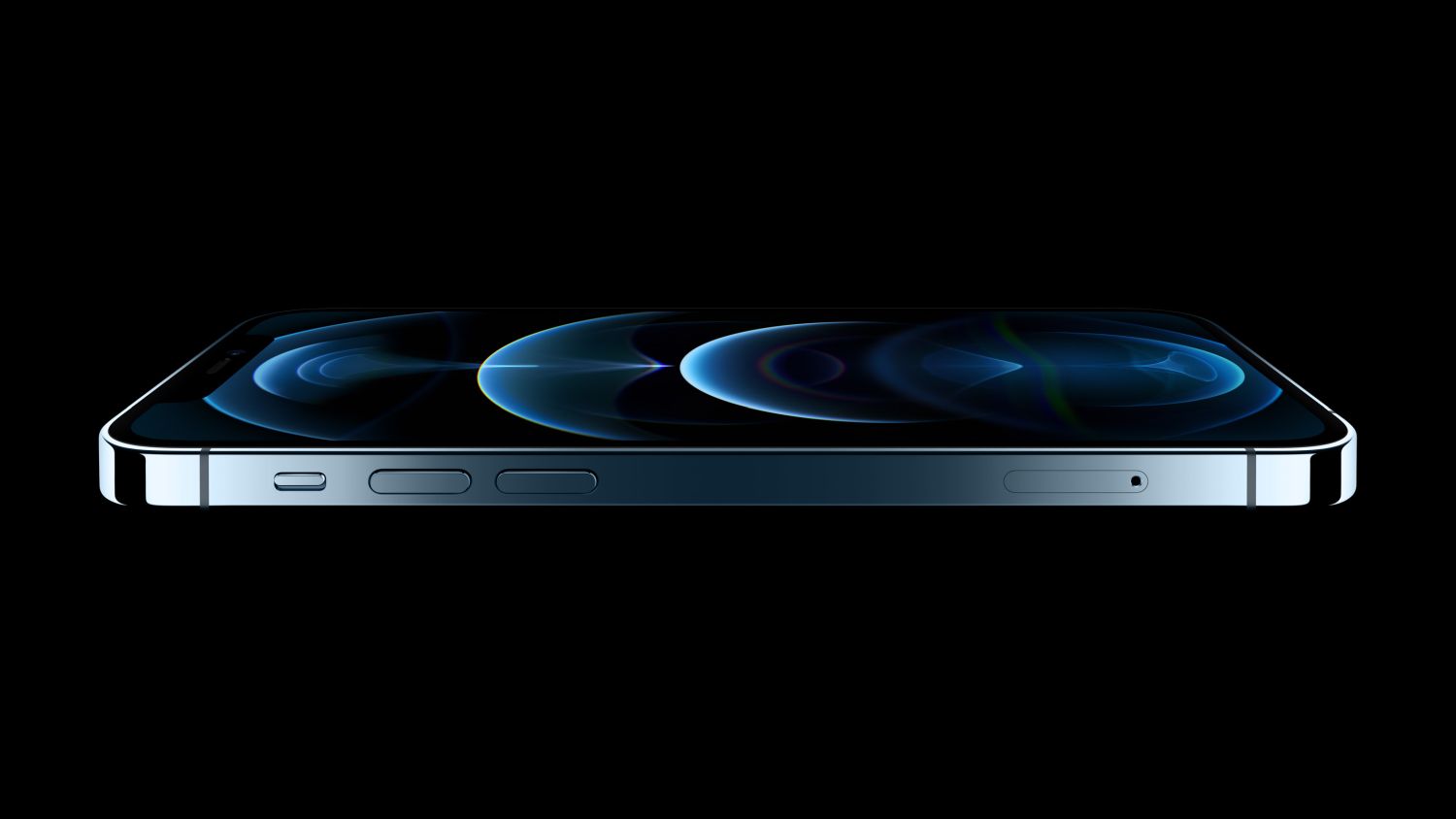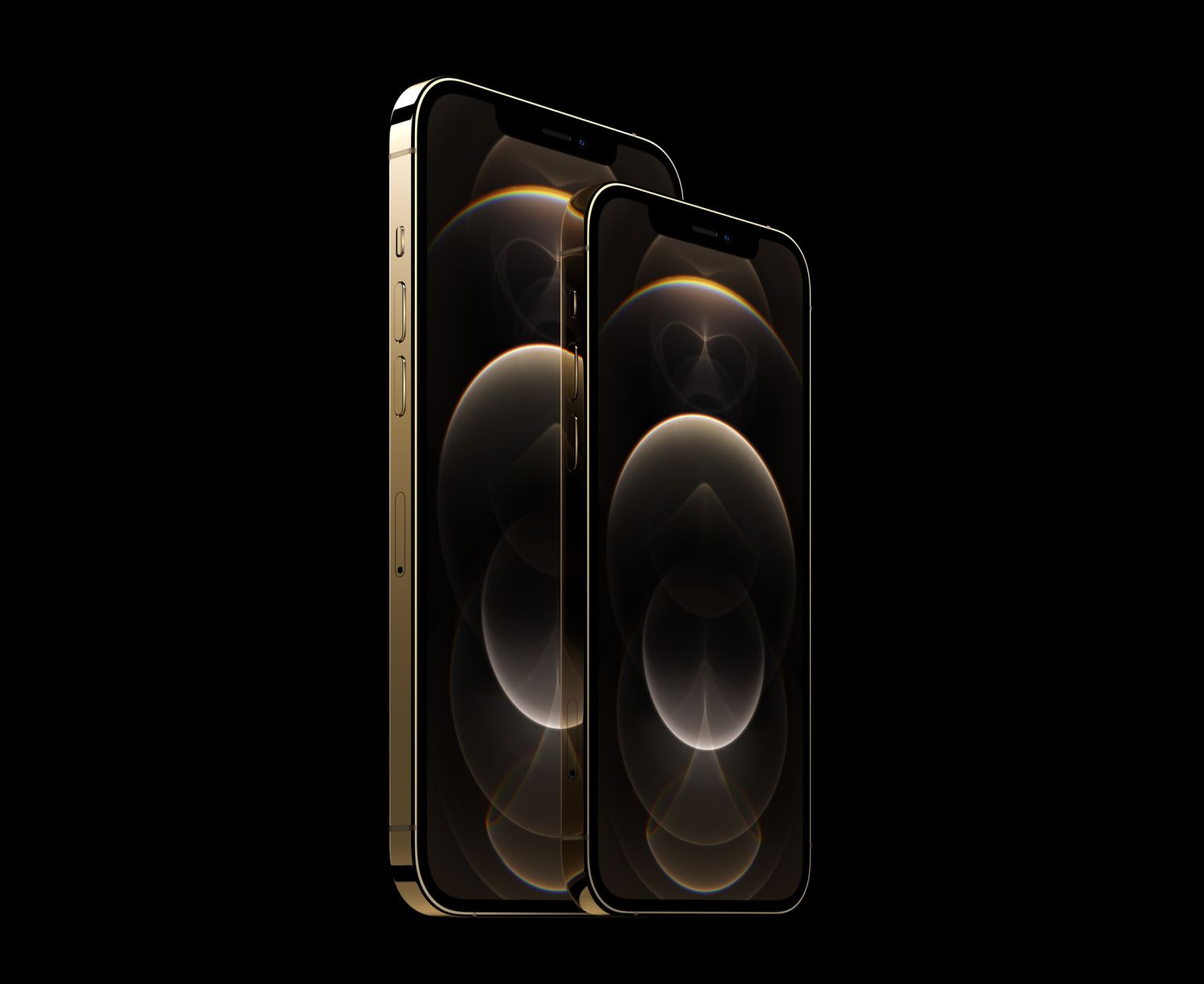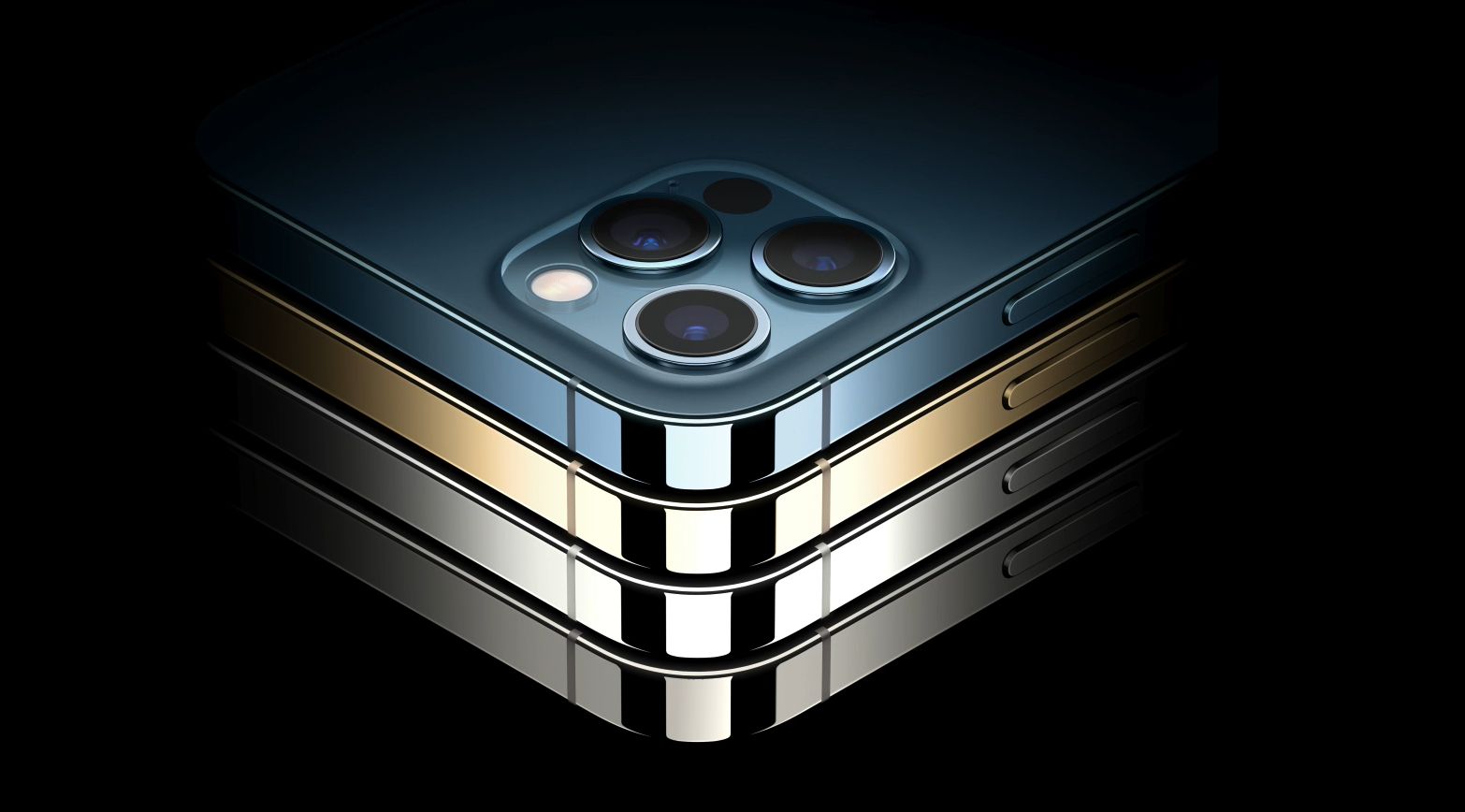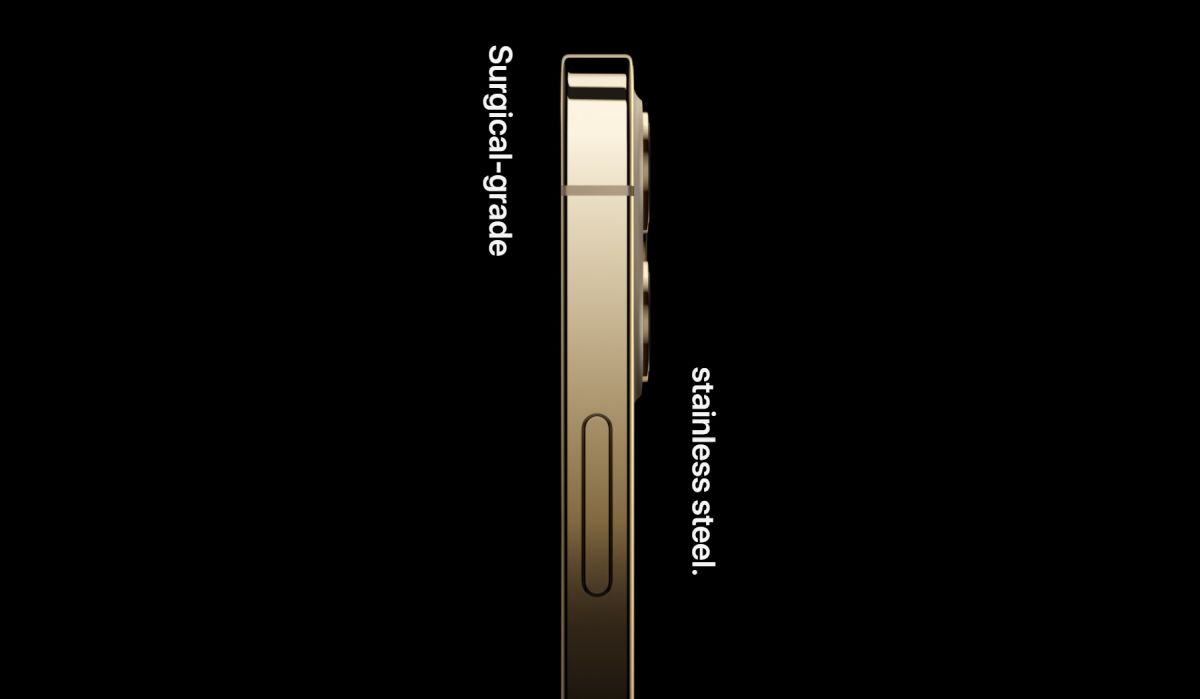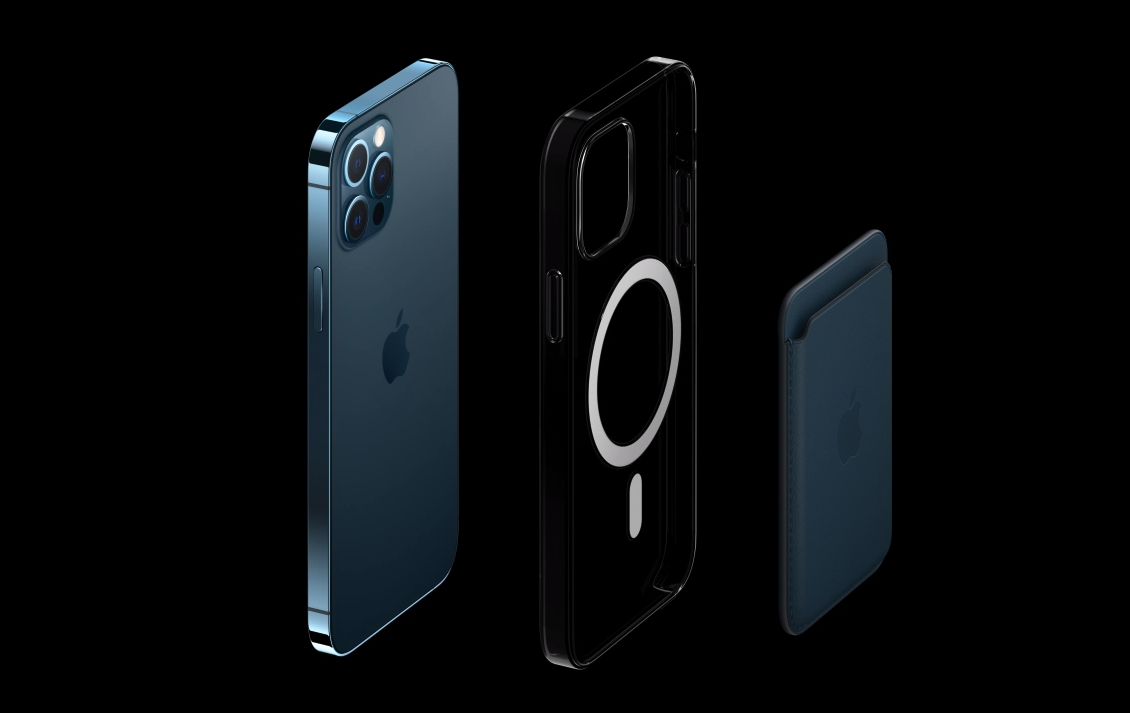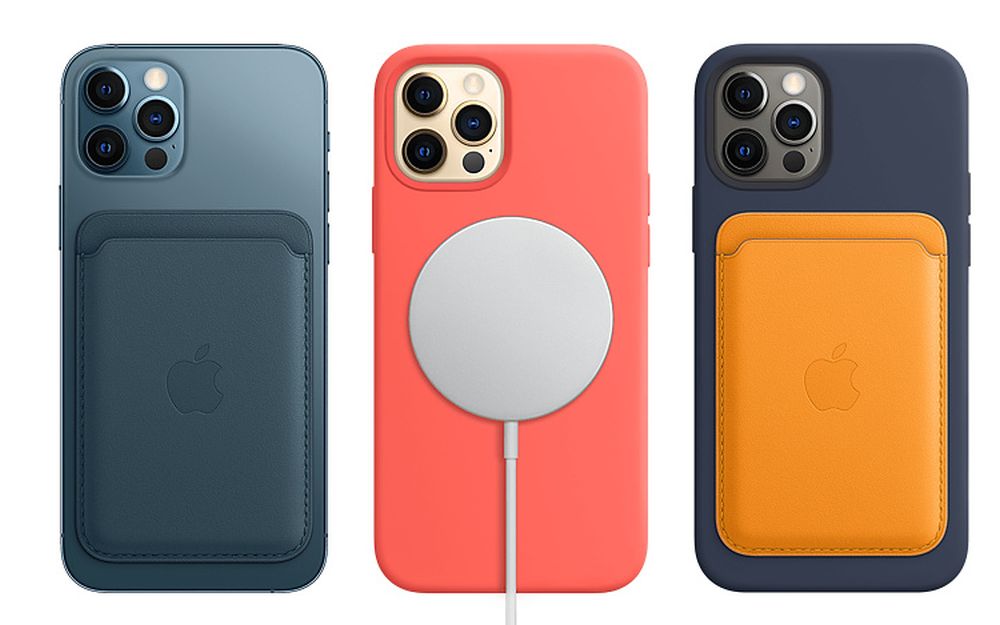Apple’s iPhone 12 series is the biggest lineup ever with a total of 4 different models. While the more affordable iPhone 12 and 12 mini offer almost everything you want from a flagship phone, the iPhone 12 Pro and Pro Max are the phones to go for if you want the best iPhone.
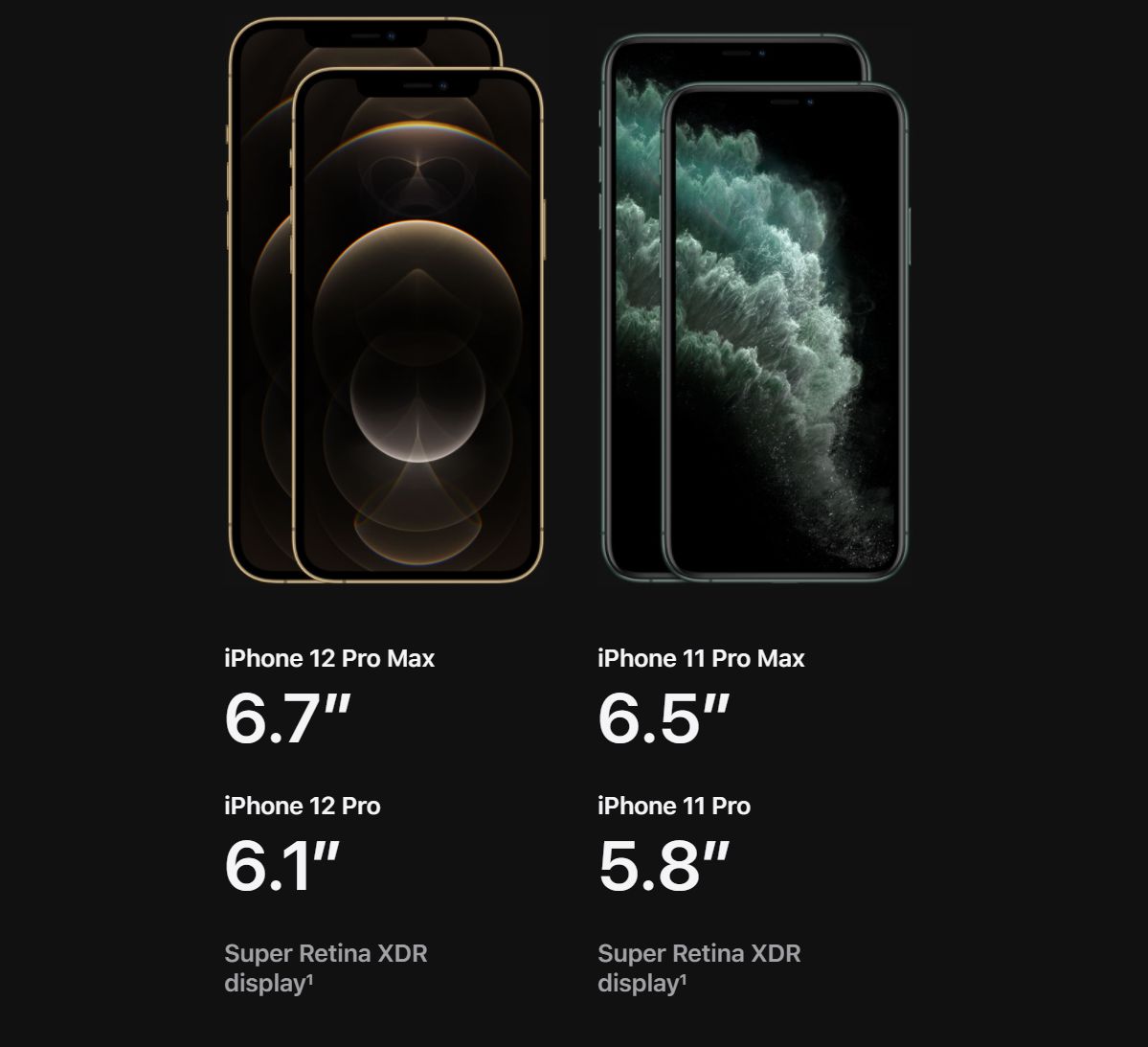
It might not look obvious at first but the iPhone 12 Pro and Pro Max are significantly different from its predecessor. The displays are bigger with the 12 Pro Max jumping from 6.5″ to 6.7″, while the smaller Pro now features a larger 6.1″ screen instead of 5.8″. Both are Super Retina XDR displays with an OLED panel that pushes a 2,000,000:1 contrast ratio, max 1,200 nits brightness for HDR. It still has a wide notch at the top and pushes a traditional 60Hz refresh rate.
For 2020, Apple is going for an industrial look with flat stainless steel sides like the older iPhones. The display is now protected by Ceramic Shield that’s developed by Corning. According to Apple, the new glass provides 4x better drop resistance than its predecessor and the new Pro models also get IP68-rated dust and water resistance that can be submerged up to 6 metres deep. Both models are 7.4mm thin, which are slimmer than the iPhone 11 Pro and Pro Max but the footprint slightly bigger due to its larger display.
Powering the devices is Apple’s top-of-the-line 5nm A14 Bionic chip which is also powering the iPhone 12, iPhone 12 mini and the new iPad Air 2020. It has a 6-core CPU, 4-core GPU and a 16-core Neural Engine.
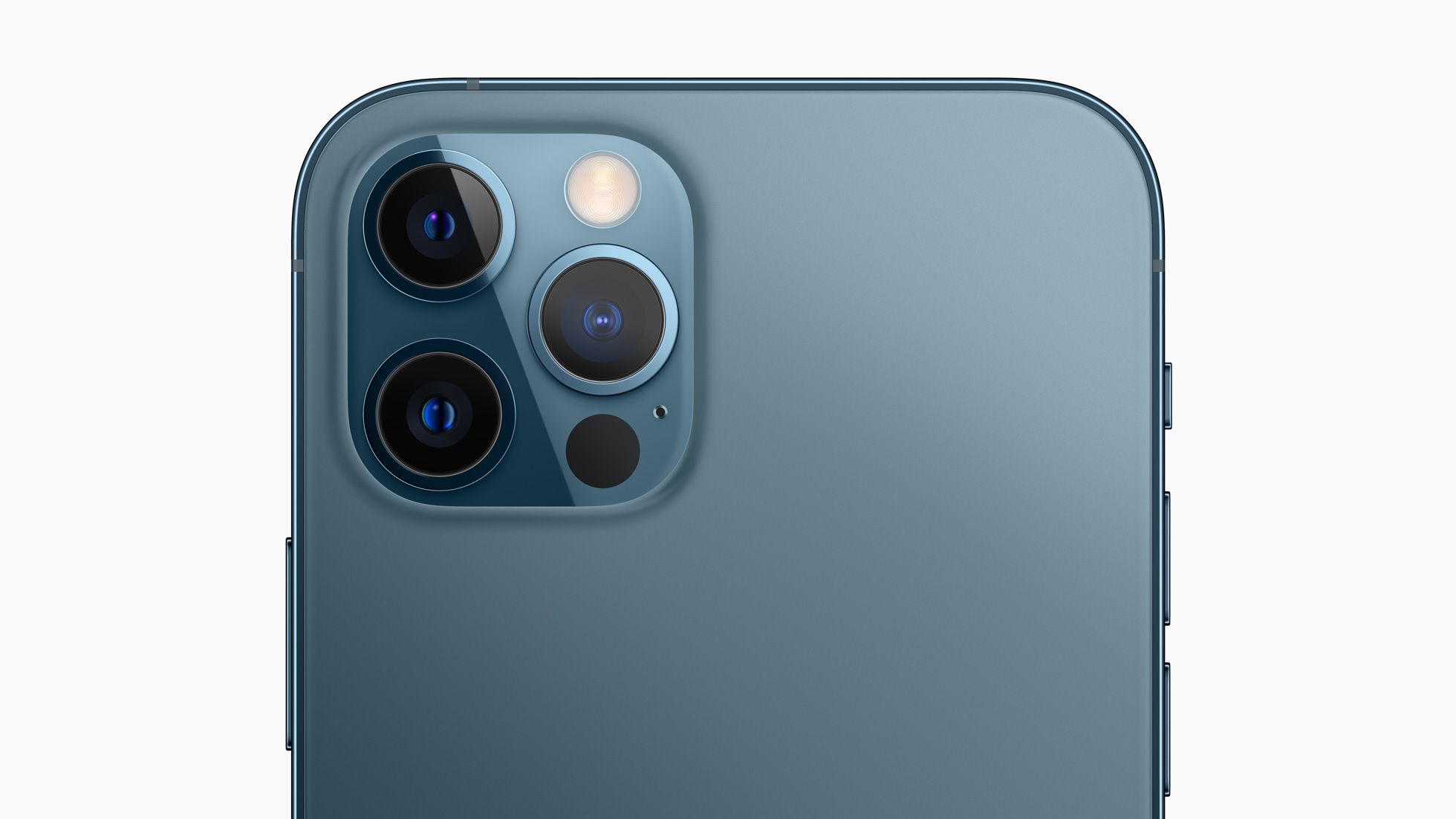
For photography, Apple still retains a triple 12MP setup at the rear that has a similar camera bump as its predecessor. Instead of pushing more pixels, Apple has made significant improvements in quality and low light performance.
Unlike its predecessor, the iPhone 12 Pro series uses a different camera setup for both 6.1″ and 6.7″ versions. The smaller Pro model gets a 12MP f/1.6 main camera with OIS, a 12MP f/2.0 telephoto camera with 2x optical zoom and a 12MP f/2.4 ultra-wide-angle shooter.
Meanwhile, the Pro Max gets a 47% larger sensor for its main camera that boasts 1.7-micron pixels instead of 1.4-micron on the normal Pro. For greater stabilisation, the 12 Pro Max uses Sensor-Shift OIS which claims to offer DSLR-like stabilisation for a steadier shots. It also has a 12MP f/2.2 telephoto camera with 2.5x optical zoom, while the ultra-wide-camera is the same 12MP f/2.4 shooter.
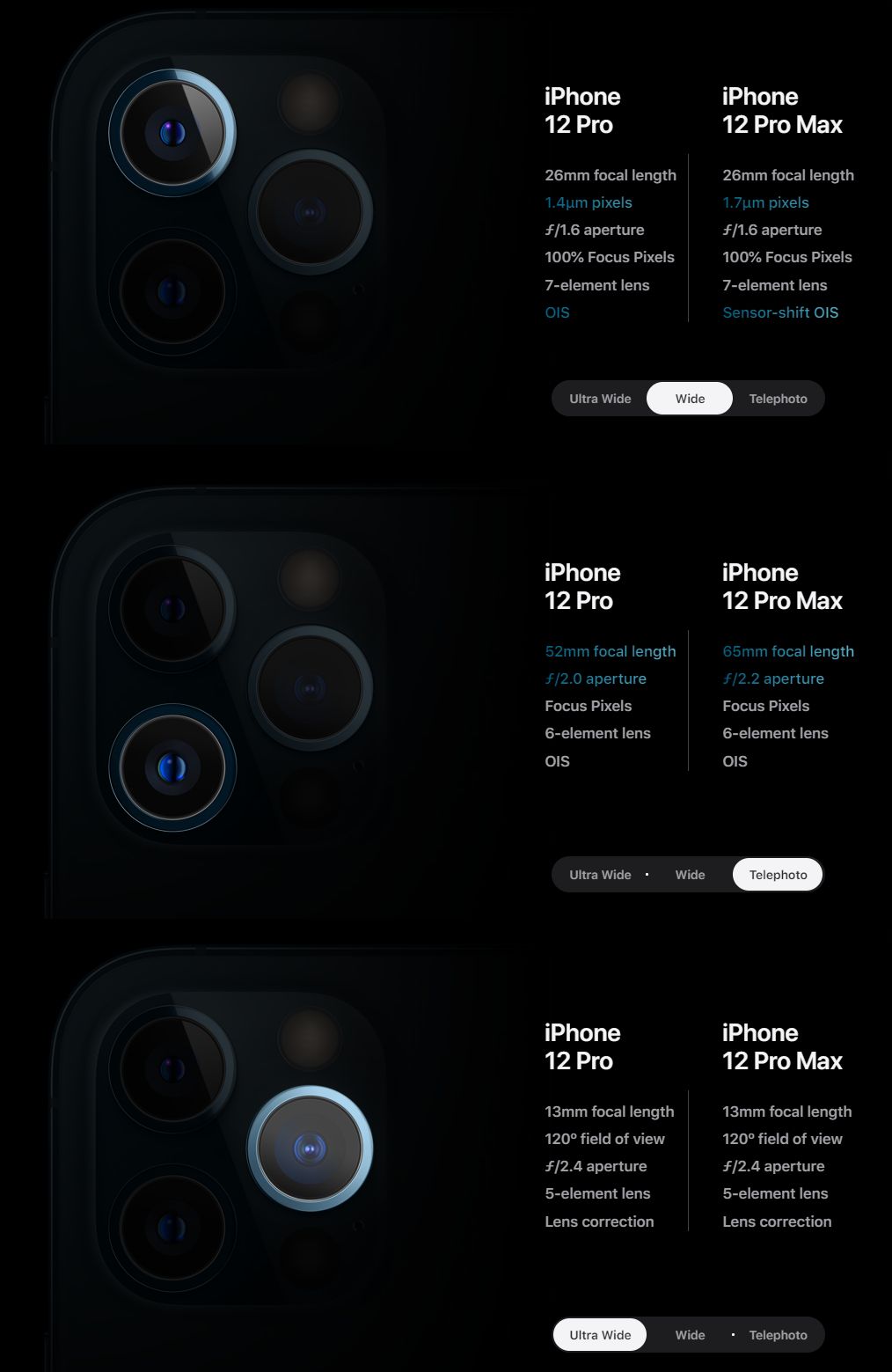
During the keynote, you might have heard Apple saying 4x – 5x optical zoom range but that’s calculated inclusive of the ultra-wide-angle (zoom out) camera. For example, the iPhone 12 Pro Max does 2.5x optical zoom in and 2x optical zoom out, which is equivalent to 5x zoom range.
Also included for both models is a LiDAR sensor which provides detailed AR depth mapping. The LiDAR technology is also utilised to improve photography as it offers faster and accurate auto-focus and Apple claims that auto-focus is now 6x faster in low light.
In front, the device still comes with a 12MP f/2.2 TrueDepth camera which supports portrait lighting effects. For FaceTime video calls, it now supports Full HD 1080p resolution over 5G or WiFi connection.
Another major improvement over its predecessor is that you can now use Deep Fusion and Night Mode for all cameras. Soon, Apple is also introducing Apple ProRAW which provides the flexibility of RAW and Apple’s computational photography. This would likely to be rolled out through a software update.
Despite not having 8K video recording, Apple says their new flagship iPhone offers the highest quality video in a smartphone. For the first time, it supports Dolby Vision HDR video recording in 4K up to 60fps. During the event, Apple says the iPhone 12 Pro is the first to enable users to capture, edit, watch and share Dolby Vision content on a single device. Sharing high-definition videos can be done quickly when it’s connected to a 5G network.
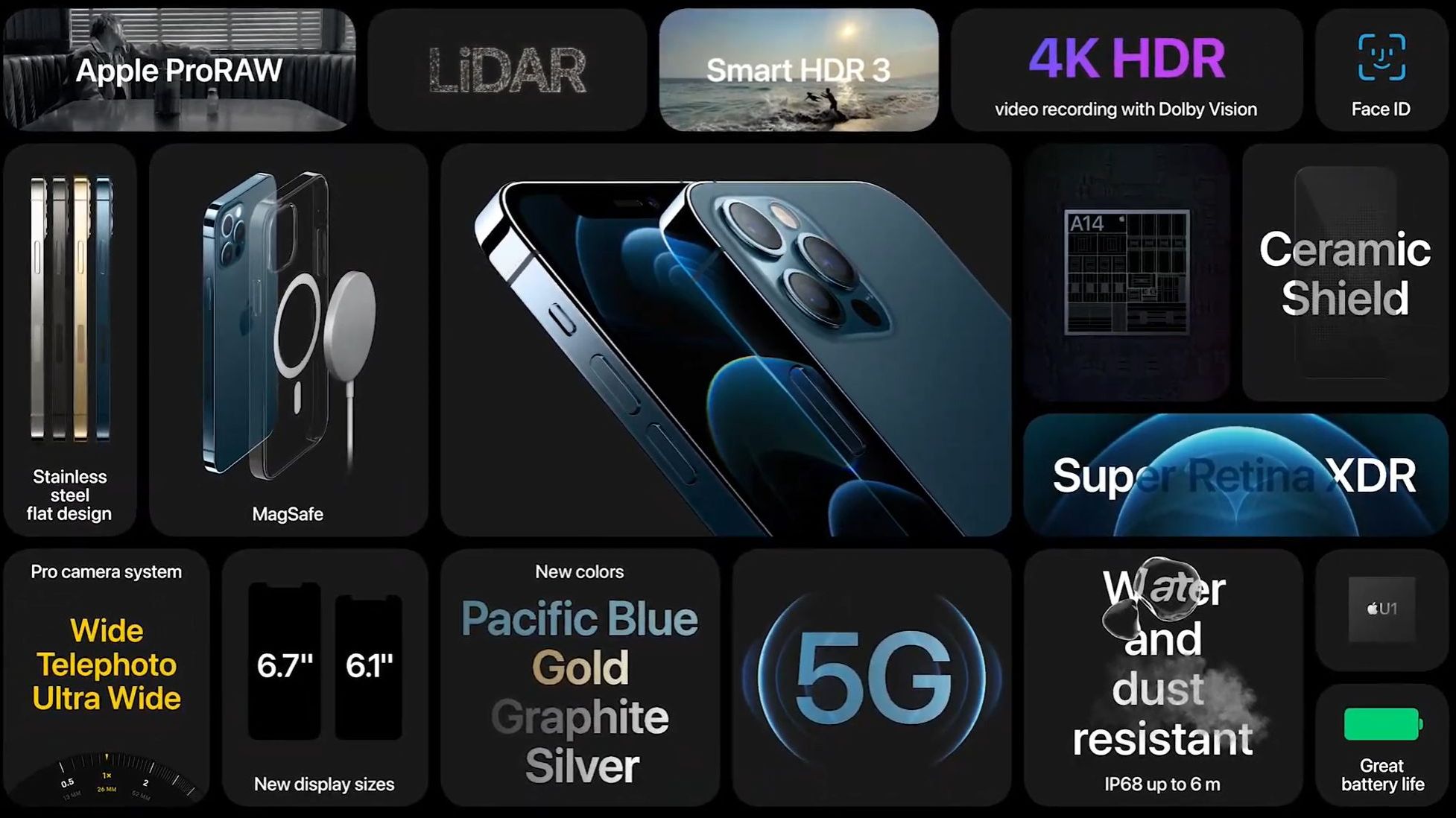
Just like the iPhone 12, the new Pro series also offers MagSafe which provides an even convenient way to charge. The device supports 15W wireless charging and it still works with existing Qi wireless charger. The MagSafe design also opens up more accessory possibilities including cases and leather wallets that can attach securely to the back of your new iPhone.
As part of Apple’s sustainability efforts, the new devices no longer ship with a charger or EarPods. This will help reduce carbon emissions equivalent to removing 450,000 cars from the road each year. As a result, the packaging is smaller but you still get a USB-C to lightning cable in the box.
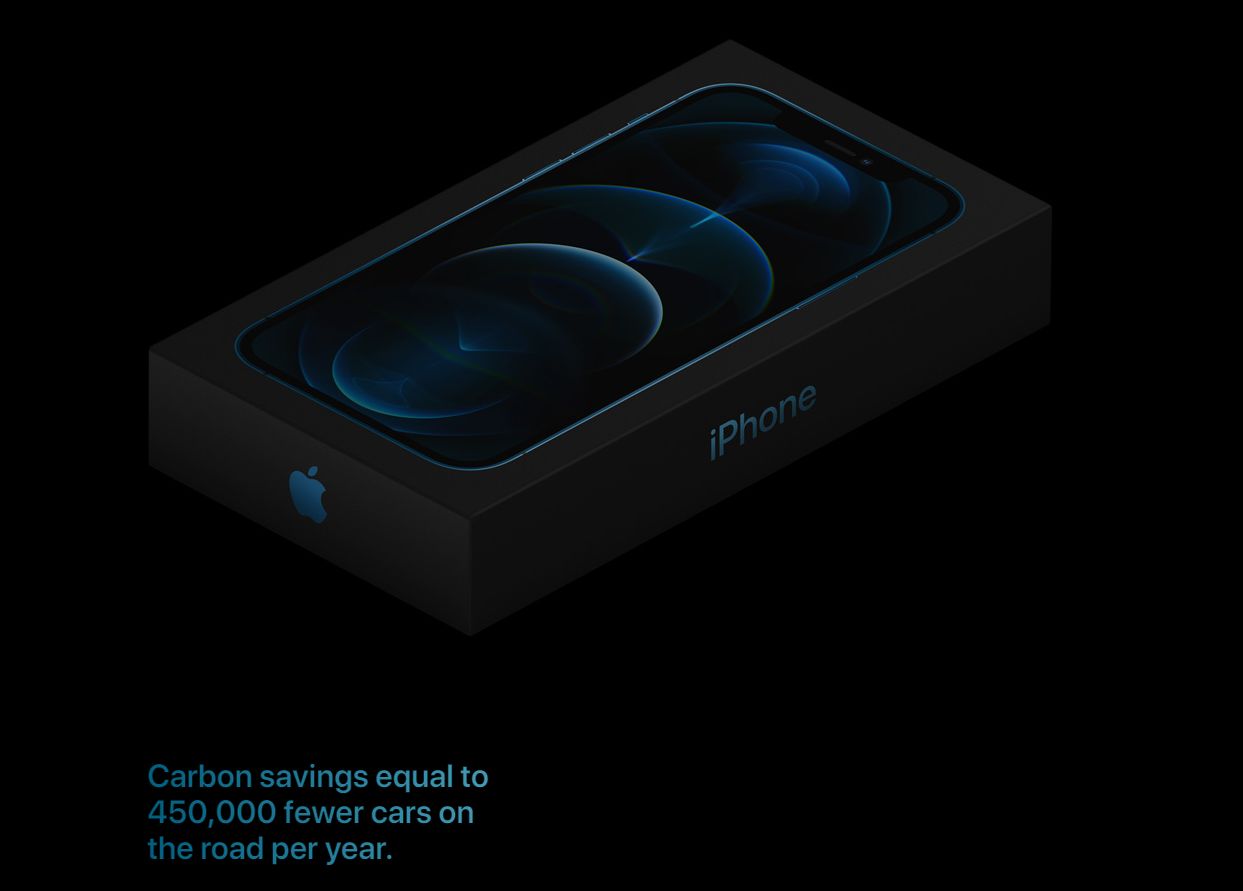
The battery life is slightly improved with iPhone 12 Pro having 1 hour extra for video playback on a single charge compared to the iPhone 11 Pro, but there’s no difference for the iPhone 12 Pro Max over the 11 Pro Max.
The iPhone 12 Pro and Pro Max are available in 4 colours – Pacific Blue, Gold, Graphite and Silver. For the base model, Apple has gotten rid of the 64GB capacity option and the Pro now starts with 128GB of storage while maintaining the same price tag as before.
Below is the official pricing in Malaysia:
6.1″ iPhone 12 Pro
128GB – RM4,899
256GB – RM5,399
512GB – RM6,2996.7″ iPhone 12 Pro Max
128GB – RM5,299
256GB – RM5,799
512GB – RM6,699
So far there’s no availability details yet for Malaysia but the iPhone 12 Pro will be available for pre-order in first wave countries such as the US, the UK, Australia and Singapore starting this Friday, 16th October and it will be available from 23rd October. The Max will be released later on 13th November with pre-order to start from 6th November in first wave countries.


